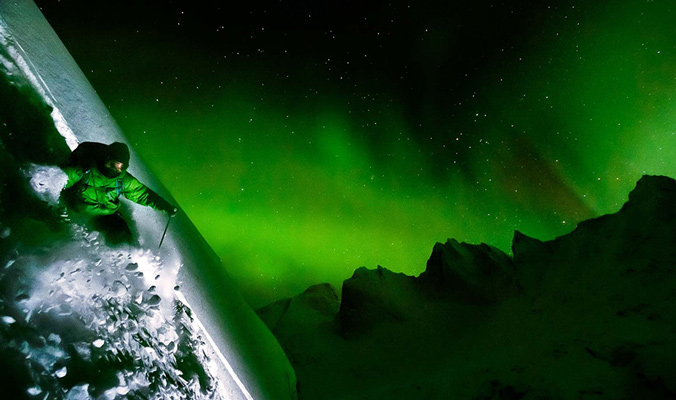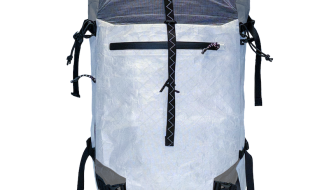Last March, photographer Reuben Krabbe realized a dream. He had a vision of traveling to the Arctic Circle to nab a ski photograph during a full solar eclipse—meeting that goal is captured in “Eclipse,” the award-winning film released today.
Originally from Calgary, Alberta and now residing in Squamish, B.C., Krabbe has pursued pro photography since he graduated high school. With the help of Switchback Entertainment and Salomon Freeski TV, he embarked on a journey last March to capture the two-and-a-half-minute spectacle, seen only in two places on Earth. He and a team of skiers traveled above the Arctic Circle in Norway, where frigid cold, clouds, wind and polar bears could have easily foiled the mission.
Eclipse just won Best Snow Film at this weekend’s Banff Mountain Film Festival and we caught up with Krabbe the morning after to discuss getting the shot of his dreams. Here’s the story in his own words.
The idea came from my northern lights photo (see below). The solar eclipse photo is the most illusive ski photograph that you can chase. I didn’t expect this to turn into a project—it seems so outlandish for a company to get on board with. If we didn’t see the eclipse, there is nothing aesthetic about the shot—it just looks boring. The most surprising thing was seeing people interested in this idea. When everyone said yes, I questioned: does everyone understand how likely this project is set up for failure?
Svalbard, Norway is a really strange place. Nearby lays the town of Pyramiden, an abandoned Russian-controlled coal mine—which was secured to have a presence in the arctic. We were in Svalbard for three weeks; we camped two of them. It was quite stressful. The weather flip flops quickly. We couldn’t anticipate anything specific beyond two to three days out. Until the day of the eclipse, we didn’t even know if the sky would be clear. It wasn’t a five-day high-pressure system where you know it would clear out.The arctic has very subtle scenery. It’s not a grand Yosemite wall, yet it is really magnificent. The natural color of light continues to change since the sun is always on the horizon—sunrise can last hours on end.
The solar eclipse was March 20, 2015. Considering that every other expedition doesn’t start until late April, we were pretty far out on the stupidity side of things. We were in the range of temperatures and location where some bad shit could go down. Most of the time temperatures were pretty workable, around minus 10° Celsius. The eclipse day was one of the coldest, as well as one day when it was windy and snowed in camp. The coldest it hit was minus 40°C.
I almost got frostbite two hours before the eclipse. I was taking a shit, in minus 20°C temperatures, and my matches wouldn’t light to burn the toilet paper. Everyone got a little frost nip here and there, some on toes and fingers. The athletes—Chris Ruebens, Cody Townsend and Brody Leven—were high up and exposed to cold temperatures and wind the longest during the shoot.
There was an active polar bear on our side of the peninsula. Our guide, Steve Lewis, didn’t want to trust a tripwire fence and we had already seen a polar bear on the first leg of our trip. We had one-hour watches, where your job was to walk around and stare into nothingness and watch the northern lights with a flare gun at the ready. We didn’t see a polar bear at camp—we were at an elevation of 400m; polar bears are typically hanging out on the ice sheet.
Seeing the eclipse was more beautiful and more awe inspiring than we anticipated. It was one of the rare trips, where everything was difficult and we had a lot of little problems. Yet every line we saw and wanted to ski got skied. It was mind blowing—everything from the eclipse to the polar bears all worked out. As a character part of this project, it was the success of everyone pushing together. We don’t actually know which skier is the skier in the main shot. We’re sort of happy with leaving it as that, because it was the whole effort of everyone that brought this together.
—
To watch the full film, visit Salomon Freeski TV.












Related posts: